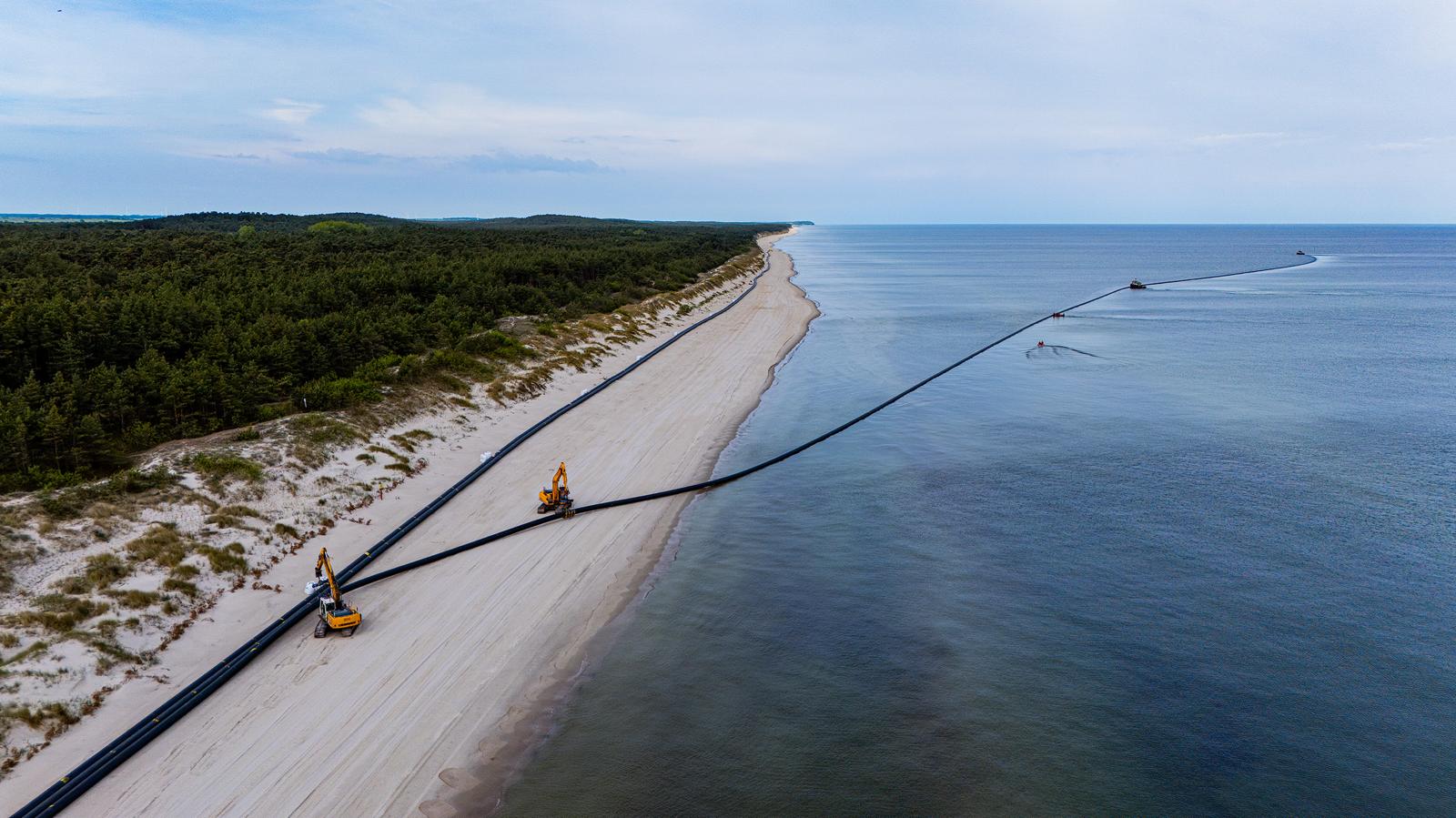The Transportation of Pipes Began in Norway – Near the Town of Stathelle, Where a Single Main Tugboat Hauled Two Pipes at a Time
On-site, near Mrzeżyno, the operation to bring the pipes ashore was particularly challenging. The effort involved three smaller tugboats stabilizing the pipes near the shoreline, three cranes operating from the beach to pull the pipes onto land, and teams from the Water Rescue Service (WOPR) on land and at sea ensuring safety, access control, and the protection of the pipes from excessive bending or damage. The entire operation lasted three days.
The logistics of this undertaking required close coordination and full engagement from operational teams on both land and sea. From the outset of the project, the safety of personnel and environmental protection have been top priorities. Once ashore, the pipes were secured: their ends were tightly sealed, big bags and stabilizing weights were used, and the area is continuously monitored by technical teams and security personnel.
Next, the pipes will be transported to the so-called landfall area, to the starting points of the HDD (Horizontal Directional Drilling). This drilling will allow the energy cable to be laid and power generated by the Bałtyk 2 and Bałtyk 3 offshore wind farms to be transmitted to the mainland. The work will be conducted underground using a method that is safe for the environment and surrounding areas.
The Baltic 2 and Baltic 3 offshore wind farms, being developed by Equinor and Polenergia, will have a combined capacity of 1,440 MW and are expected to provide clean renewable energy to over 2 million households in Poland. The first energy is scheduled to flow in 2027, with the commercial phase beginning in 2028.

